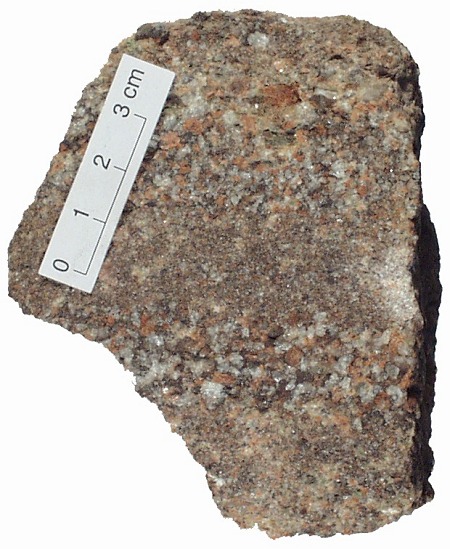
![]() Feldspathic
sandstone; Stoer, NW Scotland
Feldspathic
sandstone; Stoer, NW Scotland
Individual sand grains are up to 4 mm across, and are quite
angular in shape. The bedding is shown by changes in grain
size from layer to layer. Glassy white grains are quartz;
pinkish-orange grains are feldspar. Strictly, this is an
arkose, a feldspar-rich sandstone. Sandstones like these,
from the Torridonian of NW Scotland, were deposited by
shallow, fast-flowing rivers. The angular grains and and the
large amount of feldspar (which would eventually weather to
clays) imply that the rock material was eroded and
transported quite rapidly from its source to its place of
deposition. The overall reddish-brown colour of the rock
comes from iron oxides in the rock matrix and coating the
surfaces of the sand grains. This is characteristic of
sediments formed on land, where the iron in them can be
oxidized by the atmosphere.